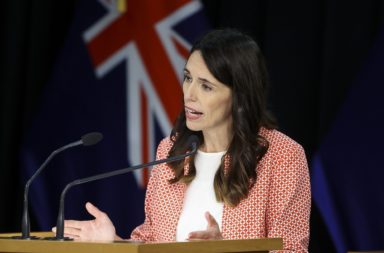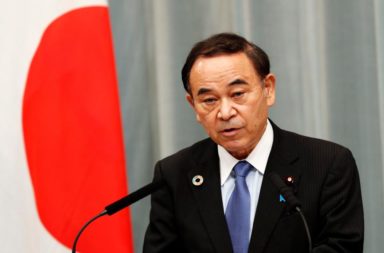To align with the sustainable development goal number 3, which is Good Health and Well-Being, The Ministry of Health and Family Welfare has introduced some good health schemes. These schemes cater to all sections and aim to make healthcare affordable for all.
Some of the healthcare schemes are designed for women and children are very good. In their recent report, The Better India shows the comprehensive list of all the schemes. Let us go through it to understand what benefits we can get from these schemes.
Community Healthcare & Health Insurance
1. Ayushman Bharat Yojana (ABY) / Pradhan Mantri Jan Arogya Yojana (PMJAY) / National Health Protection Scheme
The much talked about ABY scheme was launched in September 2018 with the aim to provide a holistic healthcare and health insurance facility to the country’s lesser privileged population, at all healthcare levels—primary, secondary and tertiary.
Citizens below a certain income level become eligible for the Ayushman Bharat card, which entitles them to cashless treatment up to Rs 5 lakh in all government and select private hospitals in the country. To avail the service, a beneficiary has to pay a nominal annual premium between Rs 1,000 and 1200.
Eligibility: The eligibility criteria depend on the Socio-Economic Caste Census (SECC) 2011. An applicant must provide their Aadhar Card, address proof, bank details and other relevant documents at the time of registration.
- Pradhan Mantri Bhartiya Janaushadhi Pariyojana (PMBJP)
With an aim to reduce the average healthcare expense in India, the scheme provides quality generic medicines at affordable prices to the citizens.
Launched by the Department of Pharmaceuticals in November 2008, under the Jan Aushadhi Campaign, the scheme has the following objectives:
- To provide all commonly used generic medicines and healthcare products at subsidised prices at specific Jan Aushadhi outlets.
- To raise awareness about generic medicines among the citizens & prompt them to opt for the same, instead of expensive branded drug variants with the same composition.
- To instruct medical practitioners to encourage people to opt for generic medicines.
- Dispel the myth that high price is not synonymous to great quality with respect to drugs.
- Rashtriya Arogya Nidhi (RAN)
The scheme allows any individual living Below Poverty Level and suffering from any major life-threatening disease, to get treatment and medical services at any super speciality Government hospitals/institutes.
To avail the RAN services, the applicant needs to provide:
- Application form in prescribed proforma duly signed by the treating doctor and countersigned by the Medical Superintendent of the Government hospital/institute
- Copy of income certificate
- Copy of ration card
- Reproductive, Maternal, Newborn, Child and Adolescent Health (RMNCH+A)
Launched in 2013, the popular scheme aims to reduce the rates of maternal, newborn and child mortality. The main features include improvement of reproductive and newborn health, promotion of family planning, adolescent health, HIV, gender, and preconception and prenatal diagnostic techniques.
Programmes undertaken under the scheme include health tracker Scorecard, National Iron Plus Initiative (NIPI – to combat the wide scale occurrence of anaemia), prenatal screening for birth defects and early interventions, as well as combating nutritional deficiencies among children and adolescents.
- Janani Shishu Suraksha Karyakaram (JSSK)
Introduced in 2011, the JSSK scheme motivates expecting mothers to opt for institutional delivery, through which they can avail several protective facilities before and after the birth of the baby. The best part about the initiative is that it is completely free, thus dispelling the myth among rural women about the high expenses incurred through institutional delivery.
Home delivery is often dangerous and performed by non-experts or quacks. But, it is still rampant in remote villages of India as many women shy away from institutional delivery owing to socio-cultural norms.
- Rashtriya Bal Swasthya Karyakram (RBSK)
According to a report, 6 to 7 per cent of newborn infants in India are born with congenital defects. In the present-day context, this translates to around 17 lakh babies born every year in India with birth defects, which in turn leads to a high rate of newborn deaths. On the other hand nutritional deficiencies cause developmental delays in preschool children, which often leads to physical disabilities related cognition, hearing or vision in later life.
The RBSK scheme is meant to specifically address these issues in newborn babies and young children through early detection and management. Children from newborn to 18 years of age are eligible for this scheme. The benefits of the scheme encompasses the 4 D’s in children’s health – Defects at birth, Deficiencies, Diseases, Development delays including disability.
- Integrated Child Development Service (ICDS)
Designed for children between 0 to 6 years, the ICDS happens to be one of the world’s largest governmental programmes for early childhood development. Launched way back in 1975, the flagship programme secures:
- Nutritional and good health of children in the age group of 0-6 years
- A holistic approach toward proper physical, psychological and social development of a child
- Reduction in infant mortality, malnutrition and number of primary school dropouts
- Empowerment of the mother to ensure proper care for the child
- Rashtriya Kishor Swasthya Karyakram (RKSK)
Adolescents in the age group of 10 to 19 years fall under the ambit of this relatively recent scheme launched in 2014 by the Ministry of Health and Family Welfare (MoHFW). To ensure proper implementation of the programme, the MoHFW has collaborated with United Nations Population Fund (UNFPA) and designed a National Adolescent Health Strategy.
The ideal aspects of the programme include equity, inclusion, gender equality, adolescent participation and leadership. The key objectives include:
- Improvement of nutrition
- Improvement of sexual and reproductive health
- Mental wellness
- Prevention of violence and injuries
- Prevention of substance abuse
- Mission Indradhanush & Intensified Mission Indradhanush (IMI)
The former scheme was launched in December 2014, aimed at ensuring full immunisation with all standard vaccines for children up to 2 years of age and pregnant women.
The scheme had been implemented on a war footing in 201 districts of 28 states where the number of unimmunised children was found to be the highest. Till August 2017, around 2.53 children and 68 lakh pregnant women have been reportedly vaccinated.
The second phase of Mission Indradhanush – Intensified Mission Indradhanush (IMI) – was launched in October 2017 to further expand the outreach and bring more rural women and children under its ambit.
Intensified Mission Indradhanush (IMI) 2.0 was also announced recently in December 2019 and is expected to accelerate the coverage by March 2020, and bringing the urban population within its reach.
Under Mission Indradhanush, four rounds of vaccination activities are conducted to ensure foolproof immunisation. Flexible timing and mobile immunisation activities allow more people to avail the services.
- National AIDS Control Organisation (NACO)
NACO was set up in 1992 to combat an epidemic of HIV-AIDS and also to ensure proper treatment, caregiving and a dignified life to HIV patients. Till date, the organisation has been successful in improving the treatment prospects for the disease in India, as well as dispelling the social stigma surrounding it.
NACO works in close collaboration with non-government organisations (NGOs), community support groups, women’s self-help groups in remote villages and extended communities to improve the accessibility of the services, and raise widespread awareness.
- Revised National Tuberculosis Control Programme (RNTCP)
Started back in 1962, the National Tuberculosis Control Programme has so far benefitted millions of patients through early diagnosis and intervention in tuberculosis cases. 4 lakh DOT centres have been set up across the country which provides free medical services and sustained treatment (till recovery) to underprivileged patients.





